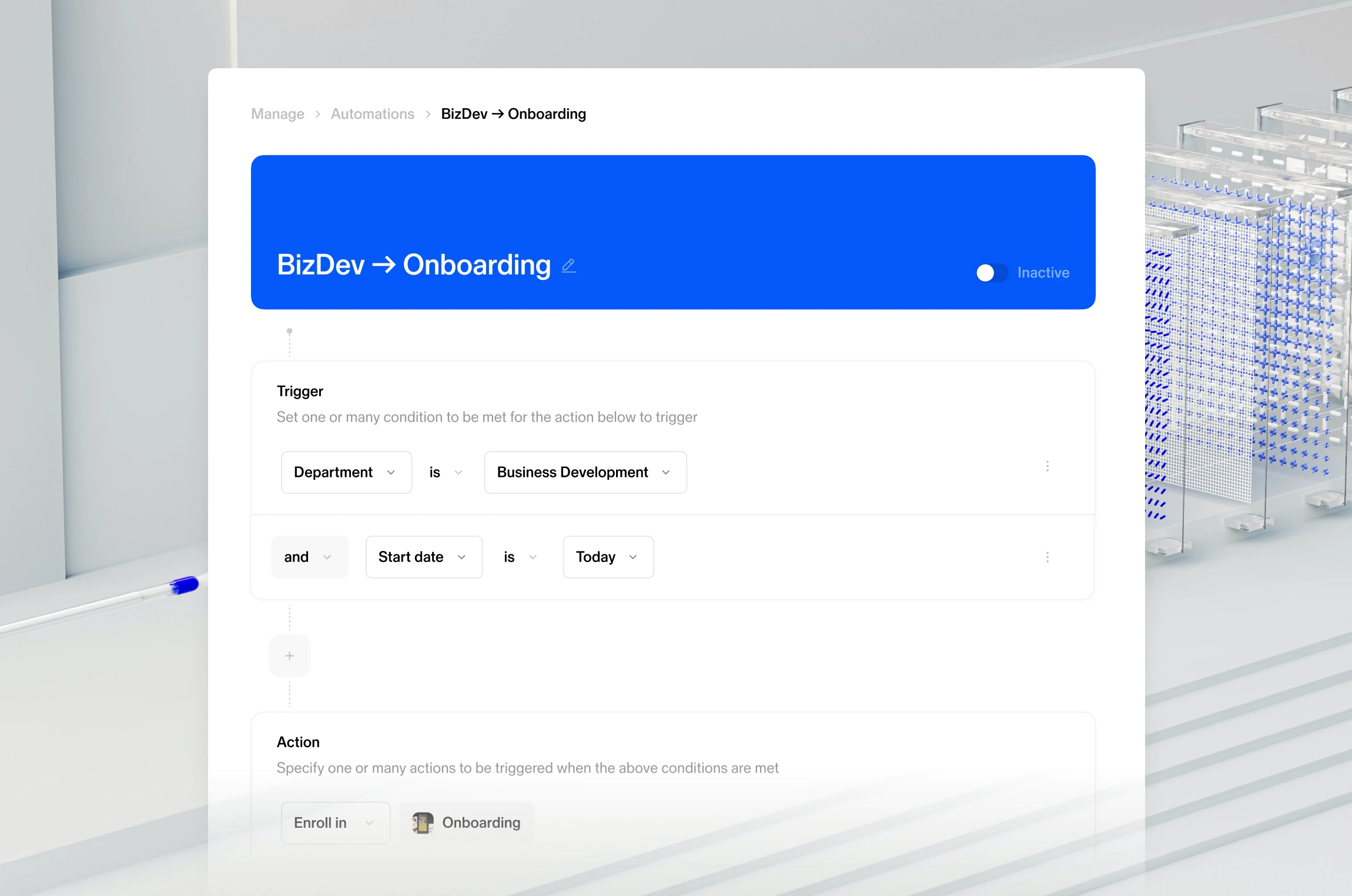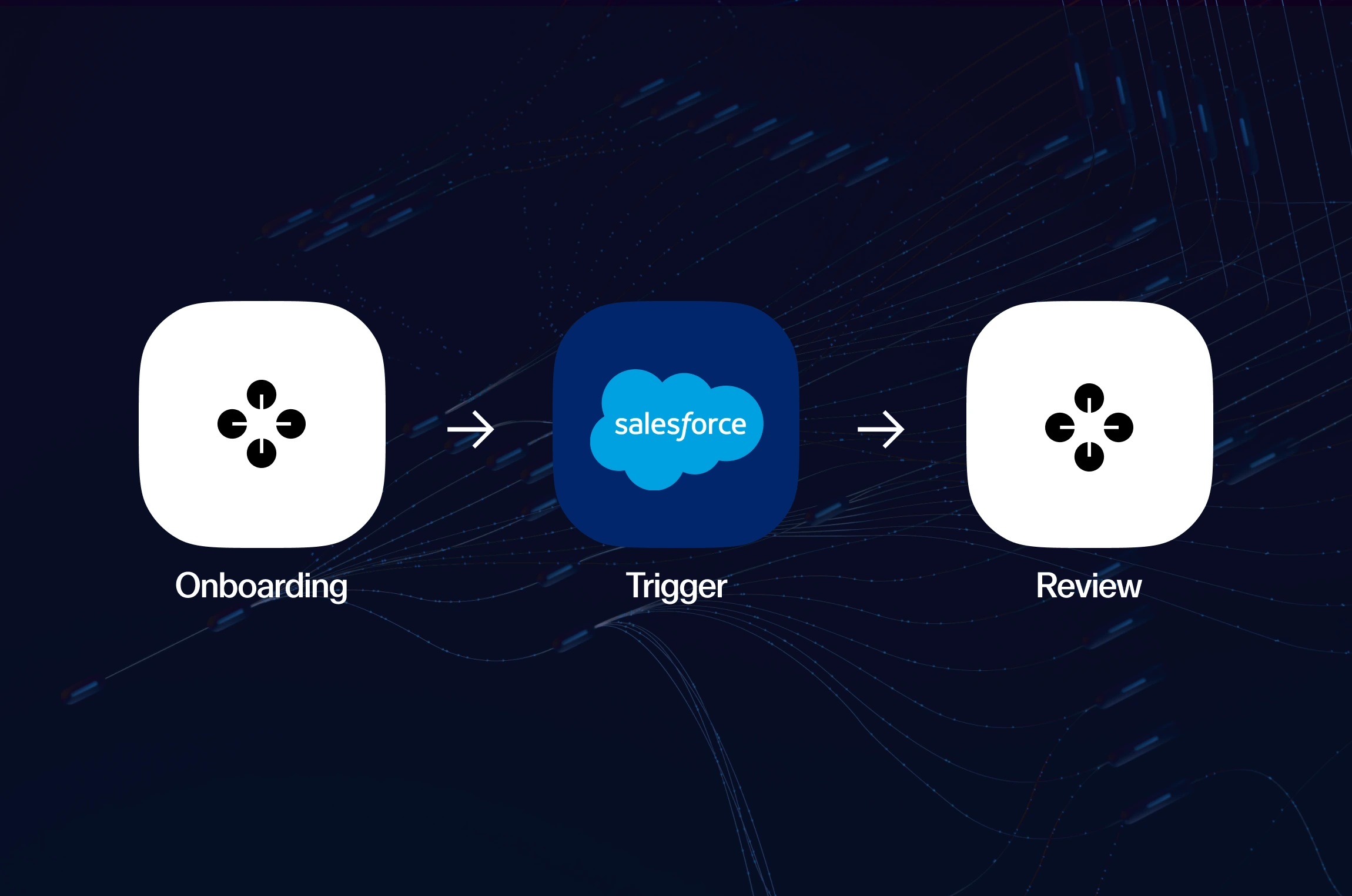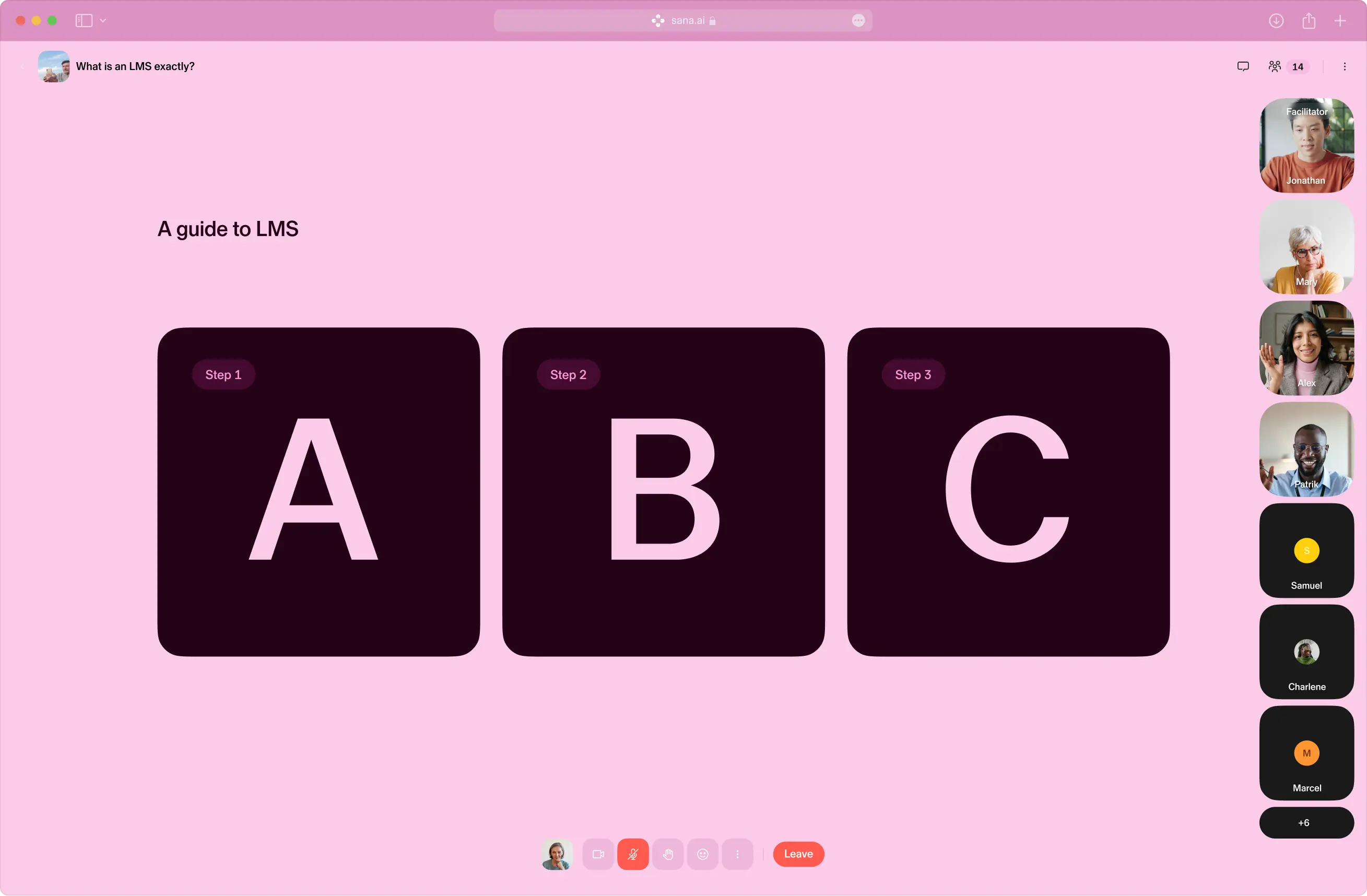The LMS integration - every scaling company's best kept secret

The right LMS for a company is a seamless partner in building knowledge. Building that knowledge can start from the second a contract is signed, throughout onboarding, and through to enablement.
When you’re scaling, you welcome talented people every week. Each new starter wants to have everything they need when they need it. How can already stretched HR teams take care of every new starter and maintain their strategic work?
The answer lies in automation. And the key to automation is the right LMS integration.
Automate onboarding. Scale your employee experience.

The best way to help every new starter is to offer onboarding programs that are timely, personalized, and immersive. But when onboarding is a manual process, HR teams are limited to administrative tasks, allocating training programs, and managing diaries. In companies that are scaling, the workload here can leave some HR reps feeling like they never get to flex their people skills. And that’s not why they were hired. People teams deserve to dig into the strategic work around employee engagement and satisfaction. To do that, they have to free themselves from the admin.
Why delegate when you can automate?
Automating staff onboarding can sound as though the human touch is being removed. If you automate Slack to remind your new starter to join an online training, isn’t that missing an opportunity for getting to know people?
You can’t get to know people when you’re overwhelmed. When LMS and HRIC systems aren't integrated, an onboarding schedule might be a carefully calibrated spreadsheet of hundreds of rows of new starters, columns of dates, and courses. HR teams have to work slowly and carefully through multiple systems to allocate every event based on job role, seniority level, and start date (and let’s not even think about that one person whose onboarding doesn’t make it onto the list). The bigger the spreadsheet, the bigger the risk of error.
You also can’t get to know people when you’re constantly answering questions. When’s my first payday? How do I access my personal development budget? What choice do I have for my tech setup? Answering these questions takes up a lot of HR time. When you automate onboarding, those questions can be answered upfront. For example, through a Payroll 101 course that your LMS automatically assigns to every new hire on Day 1. Or in a live onboarding session that new joiners automatically receive invites for. Whatever format you prefer, the common denominator is automating the delivery of essential content. Done right, it frees HR from manually answering the same questions over and over.
Create outstanding first impressions from the moment they sign
Imagine you’re starting a new job in a couple of weeks. You log in to your new G-Suite account, and your calendar is already packed with exciting onboarding sessions. Keen to read up on your new employer's ways of working, you accept an invite to their LMS. Logging in, you're already assigned to the company's handbook. Before your first day, you feel taken care of.
Automations make this kind of pre-boarding experience possible at scale. To automate these steps, you need to integrate your LMS with your HRIC systems. Once done, HR teams can lay out an entire onboarding program that’s optimized for day one, day two, and day twenty-one. Whether it’s ‘Information Security’, ‘Finance 101’, or ‘Cultural values’, your custom pathway will automatically allocate the right pathway to every last learner.
How Sana integrates with HR systems
Integrating Sana with your HR tech is easy. Our LMS integration only takes one day to complete and works with most HR tech stacks.
Available integrations
Need help with a different platform? Check in and ask us: integrations@sanalabs.com
Automate sales enablement. Scale business performance.

Onboarding sales reps is a specialized task. Every new starter needs to learn everything about your product, the intricacies of how it works, the nuances of your customer relationship management and Tone of Voice, and how to pitch in your company’s style. In a company that’s scaling rapidly, enabling the volume of new starters can be overwhelming
But you’ve hired the best. You want them out there, and they want to be out there. More than enabling your new reps, how can you empower them?
How do you connect learning to sales performance?
Salespeople are often highly target-oriented personalities. They like the clarity of a CRM, and the challenge of ambitious KPIs. But every new rep will bring a particular skill set and seniority. If you’re adding, say, four or five new reps a month, understanding how to empower every rep to fulfill their ability is a huge task. What training content does each person need? How do you accurately measure employee performance? It’s more columns in that ever-expanding spreadsheet and trying to scan from left to right. It’s checking back that you really have sent the right powerpoints and pdfs to the right person. In other words, it’s stressful.
This is where automations come in. Say you have multiple paths of sales courses that learners need to take. You want to allocate these in line with each person's sales performance—such as their number of clients, ARR, etc. By integrating your LMS with your Sales CRM, you can allocate these courses automatically. You could even allocate courses based on the type of prospect account. For example, triggering enterprise sales training whenever someone is assigned an enterprise account. Figuring out the rules takes some upfront planning, but it saves countless hours down the line.
Empower your reps throughout their sales careers
Sales enablement doesn’t stop after onboarding. All staff need ongoing support to keep delivering to your high standards. The right automation setup can help your sales reps and managers at every stage of their career. Whether it’s someone’s first contract negotiation or their 50th demo, let automation assign a course when the time is right.
Say one of your SDMs is struggling. How can you know what they’re struggling with? Is it negotiation? Product demos? Pitching? Imagine being able to target an individual’s needs to certain trainings. No one likes missing targets. With the right LMS integration, you can automatically allocate sales training when someone’s targets drop below a certain level. That might be all your rep needs to get back on track. From an L&D perspective, you demonstrate a ‘before and after’ effect in the process, helping more people see the value of learning.
How Sana integrates with your CRM systems
To automate Sales Enablement training, integrate your LMS with the plugin you use to measure KPIs and/or your CRM. Once this integration is live, you can set up automatic enrollments. It really is that simple.
Sana’s two priority CRM integrations are Salesforce and Snowflake.
If you’re using another tool, get in touch. We’re always open to powerful integrations that help learners achieve their full potential.
Can you spare 7 hours?
Two weeks and 7 hours. That’s all it takes to get your CRM or HRIS integrated with Sana.
Imagine the time and potential it could unlock. You’ll swap spreadsheets for smart, scalable solutions that let you focus on your most important asset: your people.
Your ABC guide to the LMS
Read article
